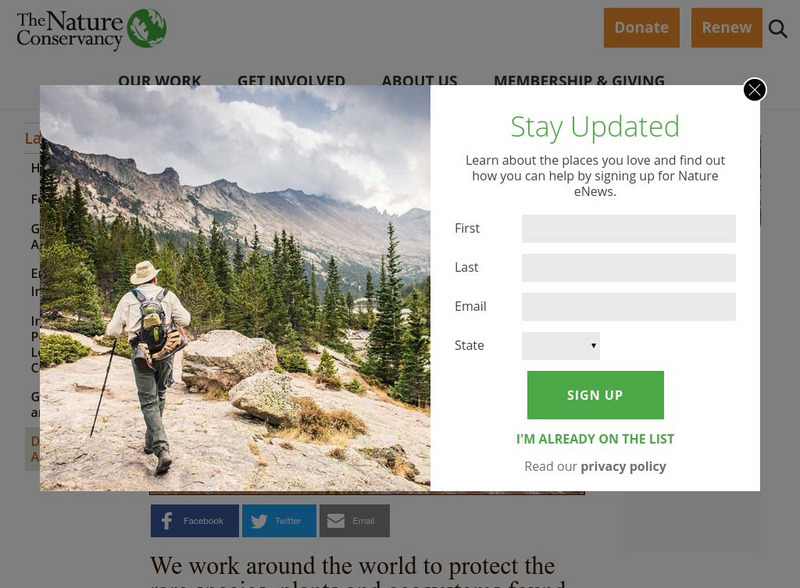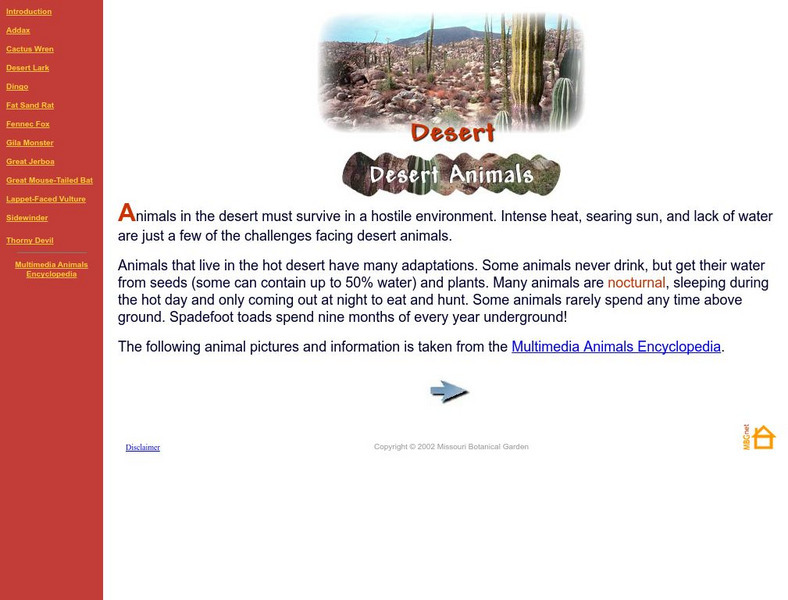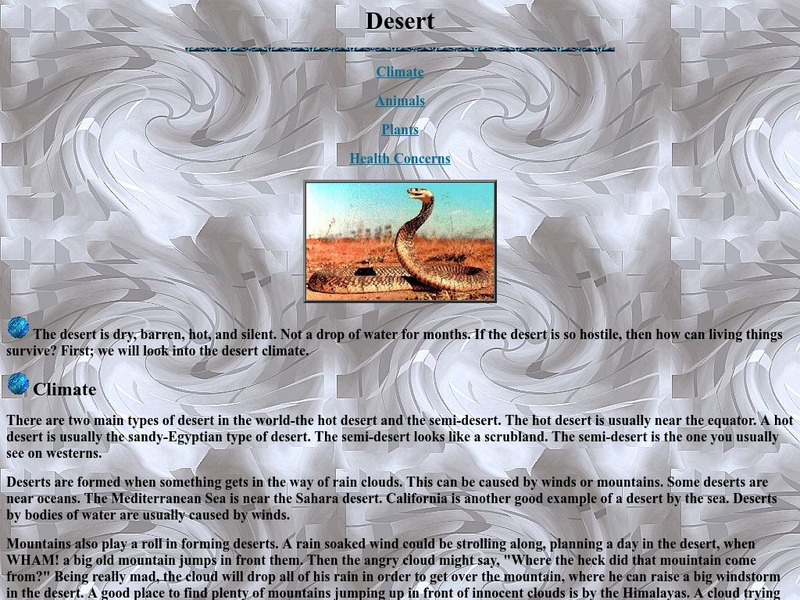Other
Whozoo: Desert Horned Viper
Special adaptations of the Desert Horned Viper are featured on the WHOZOO website. This endangered species lives in the sand and rocks of the deserts of North Africa, Israel, Arabia, and the Sinai peninsula.
Regents of the University of Michigan
Animal Diversity Web: Peromyscus Eremicus (Cactus Mouse)
The Animal Diversity Web describes the natural history of the cactus mouse, including its geographical range, physical characteristics, natural habitat, reproduction, and behavior.
Read Works
Read Works: Cool in the Hot Desert
[Free Registration/Login Required] This nonfiction passage gives information about the fennec fox and how it stays cool in the hot African desert. This passage reinforces essential reading comprehension skills. Opportunities for...
Cornell Lab of Ornithology
Habitat Network: The Special Nature of Arid Landscapes
Find out how to make the most of a desert environment in order to foster a wide array of species diversity.
World Wildlife Fund for Nature
World Wildlife Fund: Our Earth: Ecoregions: Habitats: Deserts
An overview of the climate conditions of deserts. Includes examples of plants and the adaptations that allow them to survive in the dry climate. Includes a link to information about animals that live in a desert habitat.
Nature Conservancy
Nature Conservancy: Planet Earth: Deserts and Aridlands
The desert areas in the United States that this organization is working to protect are portrayed through photographs and videos, showing the beauty of the landscapes and the diversity of life forms there.
Missouri Botanical Garden
Missouri Botanical Garden: Animals of the Desert
Learn about different types of animals that live in the desert biome such as the cactus wren, the desert lark, the dingo, the fat sand rat, the fennec fox, the Gila monster, and so on. Animal pictures and information is taken from the...
Missouri Botanical Garden
Missouri Botanical Garden: Hot Deserts of the World
Find out about the sizes, physical features, and plant and animal life of some of the world's great deserts, including the Arabian, the Great Sandy, the Chihuahuan, the Kalahari, the Mojave, the Sahara, the Sonoran, and the Thar deserts.
PBS
Pbs teachers:n.a.m.i.b. (Namib Animal Mobile of Interesting Birds)
Identify the birds of the Namib desert, describe the different environments in which birds live in the Namib Desert and build a bird mobile.
Science Daily
Science Daily: Discovery of New Fossils in Gobi Desert
Internet science magazine ScienceDaily discusses fossils found in the Gobi desert, even dinosaur fossils.
Other
Desert Gold: Desert Animals, Plants, and Rock Formation
This resource provides information about desert animals, plants, and rock formations.
Ducksters
Ducksters: Animals for Kids: Colorado River Toad
Kids learn about the Colorado River Toad. The largest native toad in the United States likes dry areas and deserts..
Other
Thurston High School: Sharryl Lattion and Melissa Femrite: Biomes: Desert
Written for younger readers, this article reveals facts about animals and plants as well as health concerns for people in the desert environment.
Center for Educational Technologies
Earth Floor: Biomes: Desert Plants
Site contains information on desert plants and plant adaptations. Offers links to biomes, a biome summary, how to read a climograph and more!













